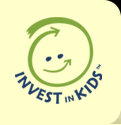Children from age 3 to 5 can begin to learn about safety, but they do not always understand or remember safety rules. Children this age still need adults to supervise them carefully.
Preschoolers need special protection from:
- burns and scalds
- falls
- drowning
- poisoning
- choking
- injuries in traffic (for example, being hit by a car or being injured while riding in a car)
Safety check |  | Be sure to use a booster seat in the car once your child is over 18 kilograms (40 pounds). |
|  | Keep hot drinks away from your child. Put a lid on hot drinks. Keep him or her safely out of the way when you are cooking or making hot drinks. |
|  | Keep dangerous products locked up (such as medicine and cleaning products) where your child cannot reach them. |
|  | Install smoke alarms (test them every month) and a fire extinguisher. |
|  | Lower the temperature of the hot water in your home to 49 degrees Celsius (120 degrees Fahrenheit). Tap water that is too hot can burn like fire!
|
Did you know?- Children love to copy adults at this age. They also like to understand rules.
- Explain to your child why you have safety rules. Show how you follow safety rules as an adult (for example, when you drive). You are your child’s best teacher.
PreschoolersIn the car Preschool children need either a car seat or booster seat to ride safely in the car.
Your child needs a car seat until he or she reaches 18 kilograms (40 pounds). Once your child is over 18 kilograms (40 pounds), move him or her to a car
booster seat. The booster seat helps the seat belt fit properly over your child’s body.
Sometimes children get too tall for their car seats before they reach 18 kilograms (40 pounds). Your child is too tall if the middle of his or her ears is higher than the back of the car seat. Move your child into a special type of combination car seat/booster seat.
Have your child ride in the back seat of the car. It is the safest place.
Always take your child with you if you need to leave the car.
At the playgroundKeep children under 5 off equipment that is higher than 1.5 metres (5 feet). Make sure equipment has good handrails, barriers, and railings.
Stand right beside your child when he or she is climbing, riding in a swing, or playing on equipment above the ground. You should be close enough to stop him or her from falling.
The ground should be covered with soft rubber mats or lots of sand, pea gravel, or wood chips. This helps protect your child if he or she falls.
Check your child before you go to the playground. Take off anything that could strangle him or her. This includes strings, drawstrings, scarves, bike helmets, and skipping ropes.
On a tricyclePreschoolers should ride tricycles, not two-wheeled bikes. They should be supervised by an adult at all times. Do not allow your preschooler to ride his or her tricycle on the road.
Choose a tricycle that is the right size for your child. He or she should be able to put feet flat on the ground when sitting on the seat.
Make sure your child wears a bicycle helmet specially designed for this age group. Check for the label that says it is approved by the Canadian Standards Association (CSA).
Other tipsWatch your child closely when he or she is near water. Never leave a child under 5 alone in water or near water. This includes the bathtub.
Always supervise your child around animals.
Children under 4 have a high risk of choking. Do not give them:
- nuts
- popcorn
- gum
- hard candy
- whole hot dogs (cut hot dogs into long thin strips, then into small pieces)
- large pieces of fruits or vegetables (cut them into small pieces)
For more information, call Safe Kids Canada at
1 800 SAFE TIPS or visit
www.safekidscanada.ca.
